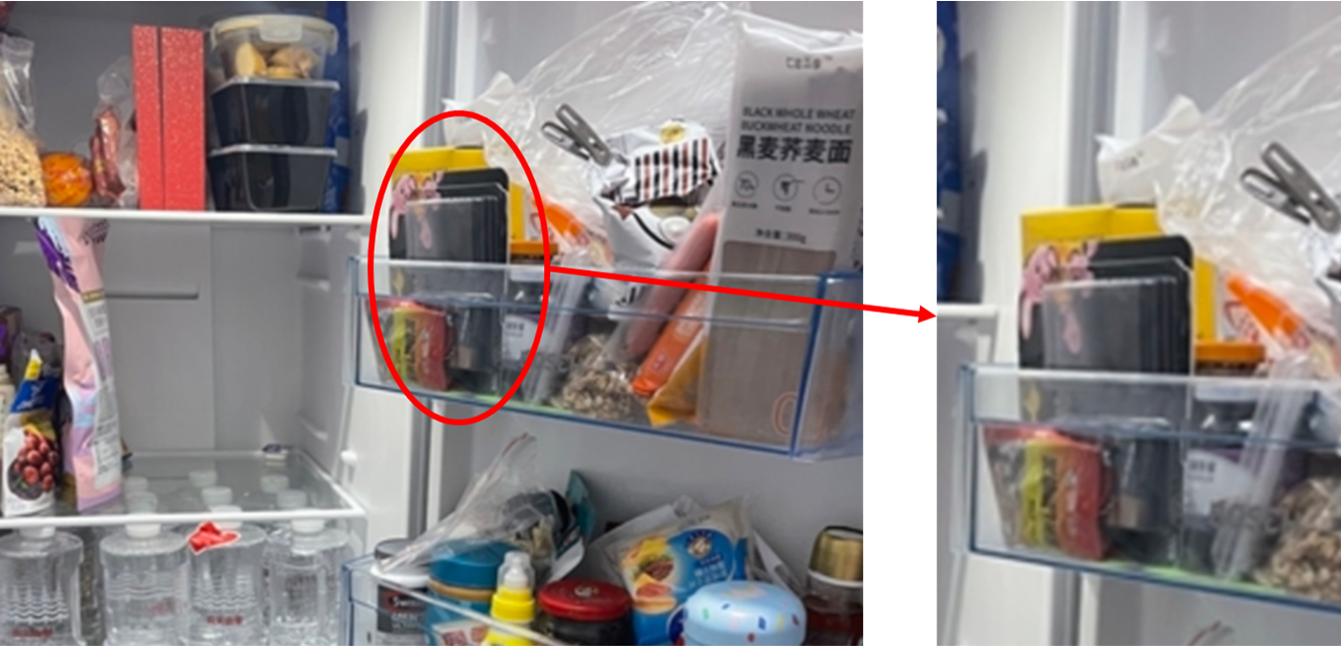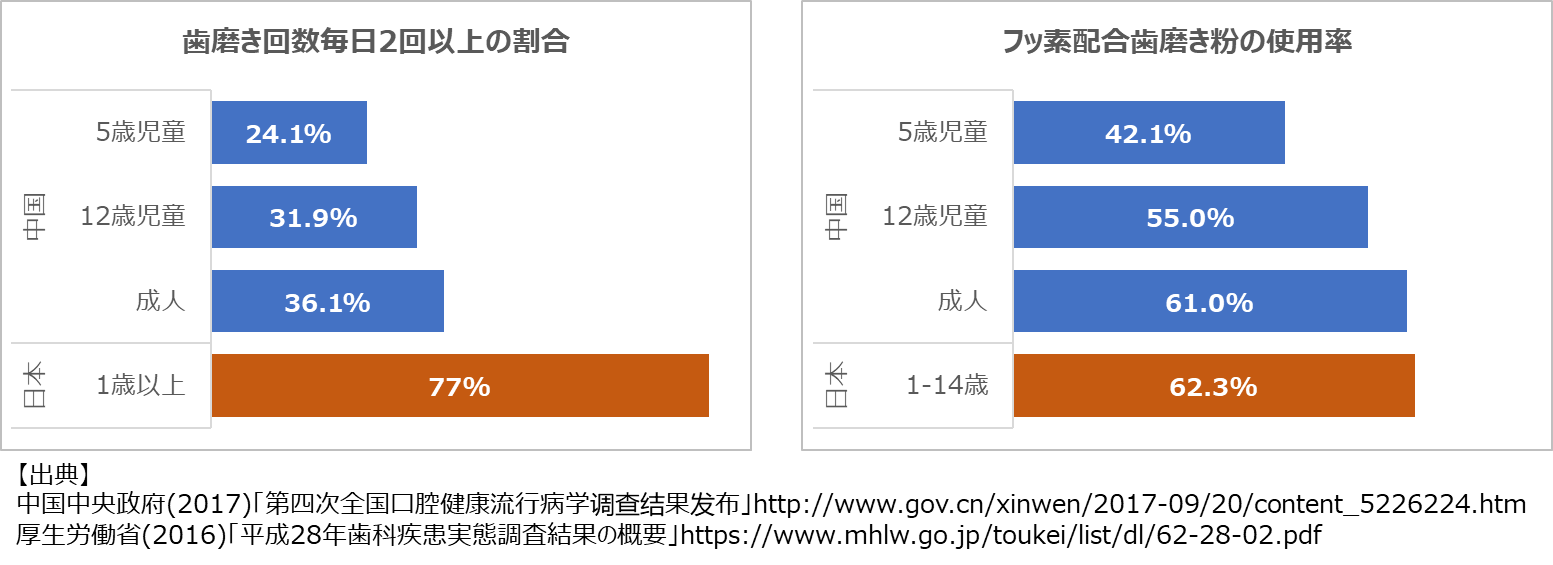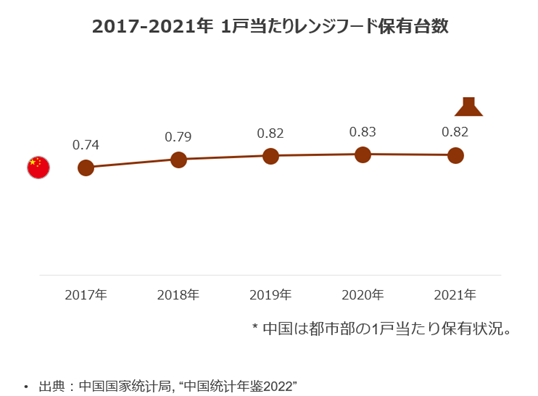[China: World Residence Tour] Hygiene awareness of Chinese consumers
- Release date: Jan 21, 2022
- Update date: Sep 09, 2025
- 9134 Views
It is well known worldwide that Japanese people have a high level of hygiene awareness. However, hygiene consciousness is actually becoming more widespread in China today, and in some cases, it may even surpass that of the Japanese. This time, we will introduce the hygiene considerations of Chinese residents in their daily lives—covering clothing, food, and housing—as well as their hand sanitizing practices.
food, clothing, and shelter
Previously (Part 15: [China: Millennial Parenting Realities] mentioned that parents go to great lengths to create environments where children avoid contact with various germs. To achieve this, some families purchase dedicated washing machines for children's clothes and insist on cooking all meals at home. In fact, it's not just children; many households maintain high hygiene standards for clothing, food, and housing even for adults.
First, let's start with clothing. Last time (Part 15: [China: Millennial Parenting Realities] states that adults encounter various bacteria and viruses outside, which they bring home, potentially infecting children who touch them. Consequently, some households have separate washing machines for children, while others wash clothes separately. Furthermore, some households soak clothes in disinfectant to sterilize them before washing in the machine. The figure below shows an example of a Shanghai resident registered on Consumer Life Panorama. This household uses Dettol brand disinfectant, diluting it with water at a specific ratio before washing to soak and disinfect the clothes.
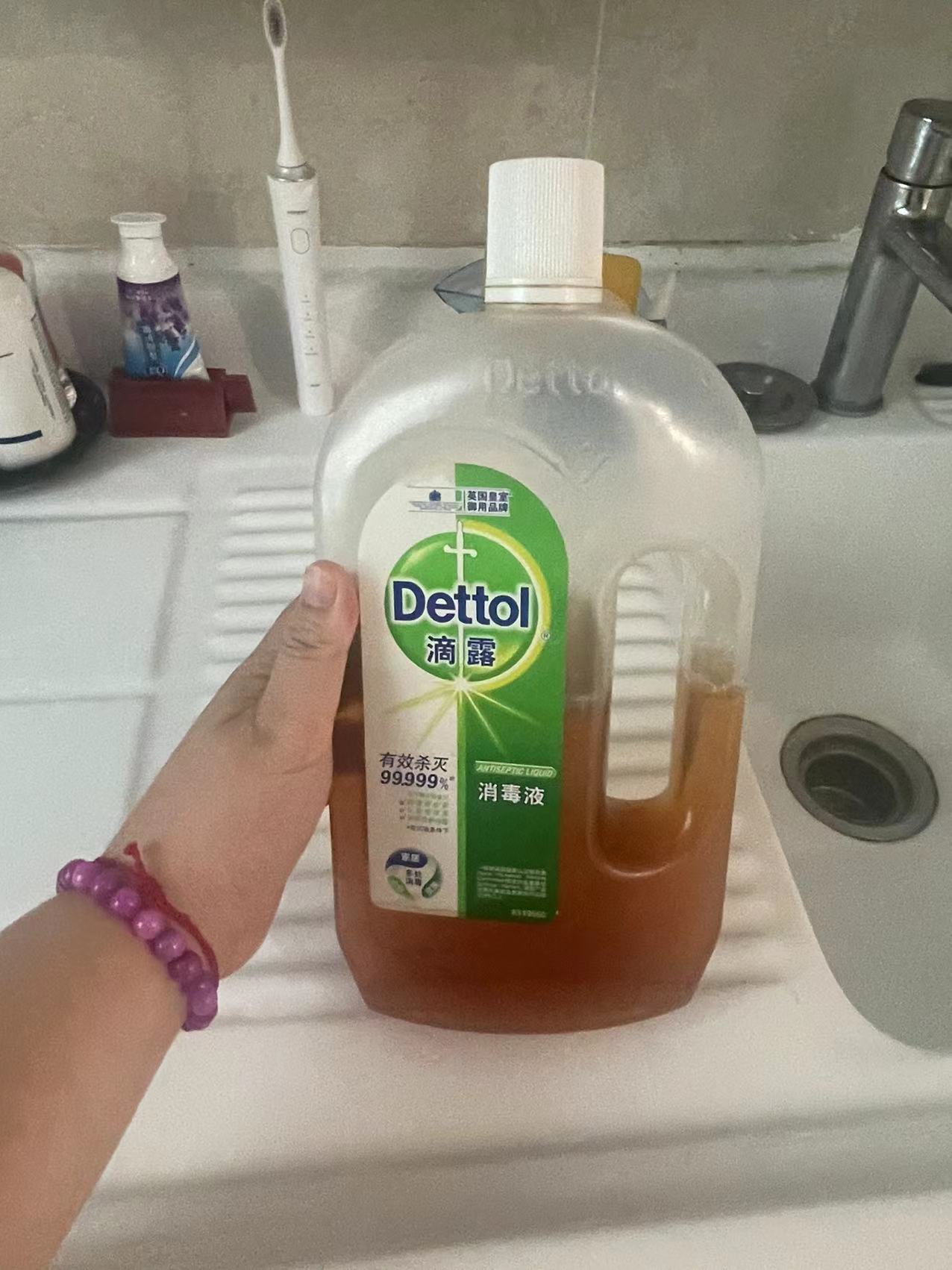
Examples of disinfectants used during laundry (Source: Consumer Life Panorama)
What is Consumer Life Panorama?
This is a website-type database that has accumulated visual data on more than 1,000 sei-katsu-sha from 18 countries around the world. The database includes many 3D models of living environments and 2D data of items owned by each sei-katsu-sha, and is useful for understanding overseas sei-katsu-sha, which is difficult to grasp using only letters and numbers.
Using visual data such as those cited in this column,
Compare the differences in the attributes of overseas consumers
To get a realistic understanding of the actual usage of each category
To understand the overall lifestyle of target consumers
etc., can be utilized as a “no-go” home visit survey.

Efforts to prevent children from coming into contact with various bacteria extend beyond laundry to showering as well. The image below shows a bathroom in a Shanghai household of affluent means. As you can see, this household has two bathrooms. The shower space on the left is for adults, while the smaller bathroom with a bathtub on the right is for children. The deliberate choice to install two separate bathrooms stems from the consideration that since undressing occurs in the shower area, bacteria adhering to clothing could be detrimental to children's health.
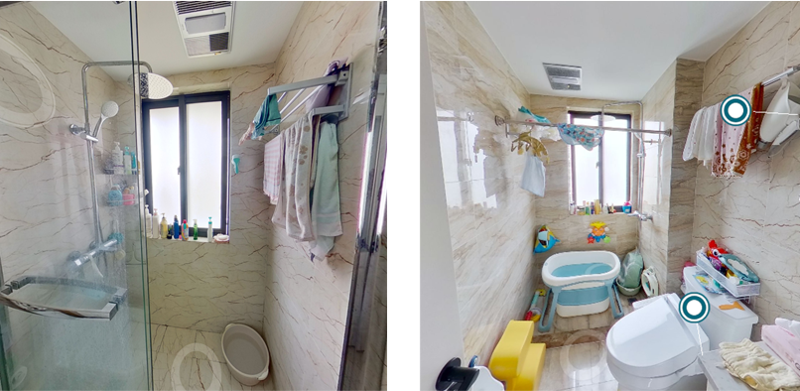
Adult bathroom (left) and children's bathroom (right)
(Source: Consumer Life Panorama)
Here's another example. The image below shows detergent and a drying area in the homes of affluent residents in China's Northeast region. Because winters are cold in the Northeast, people living there don't have the habit of showering or bathing daily like in Japan or southern China. This person is no exception, but they insist on doing laundry every day. Moreover, they wash not just clothes, but also futon covers and sheets daily. When asked why, they explained it's a habit passed down from their husband's family, as failing to do so risks the proliferation of bacteria and other microorganisms. Therefore, they use antibacterial detergent to wash clothes daily, and their drying area is always filled with laundry.
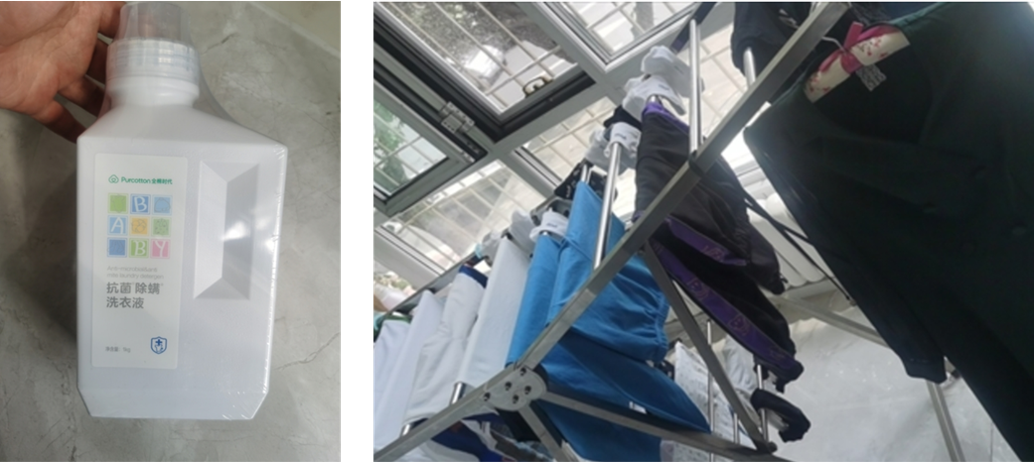
Antibacterial detergent (left) and drying area (right) (Source: Consumer Life Panorama)
Additionally, they pay considerable attention to food preparation. In China, it's characteristic to have two sinks in the kitchen. One is the main sink, while the other is used for soaking vegetables or draining dishes. Chinese consumers are concerned about pesticide residues, so they have the habit of soaking vegetables in plenty of water before cooking. It also serves the purpose of thoroughly draining washed dishes and utensils without cluttering the main sink.
Besides sinks, another habit unique to Chinese people is boiling water to drink. Therefore, water boilers and electric kettles are indispensable items in Chinese households. This habit actually only became widespread nationwide about 60 years ago. Before that, many people in China drank raw water directly, but due to poor water quality, many ended up with stomach problems or illnesses. Since directly improving water quality was difficult at the time, the government launched a nationwide campaign promoting the slogan “Boil your water before drinking.” Partly due to this influence, drinking boiled water is now completely commonplace in China.
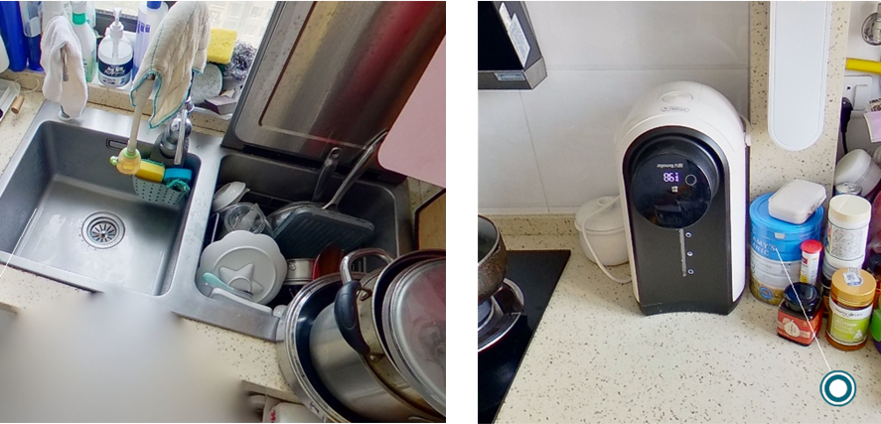
Kitchen sink (left) and water heater (right) in a Chinese kitchen
(Source: Consumer Life Panorama)
Finally, regarding housing, cleaning is particularly distinctive. In China, after using a vacuum cleaner or broom to remove dust, there is a custom of wiping the entire floor once with a mop or rag. At that time, some households dip the mop or rag into Dettol disinfectant solution beforehand, as a form of floor disinfection.
Hand Sanitization
Of course, beyond basic necessities like food, clothing, and shelter, handwashing and hand sanitizing are also essential daily hygiene practices. In urban China today, washing hands upon returning home or before meals has become a firmly established habit. Additionally, households with children often purchase gels or sprays to disinfect hands and items like mobile phones. Furthermore, due to the impact of COVID-19, people have also started disinfecting items delivered to their homes.
When wiping hands or faces, Japanese people often use towels, but in China, some households use disposable tissues instead of towels. When asked why, they explain that since towels are used repeatedly for wiping, bacteria can easily accumulate, making disposable tissues preferable from a hygiene perspective. In China, facial tissues made from cotton are also sold.
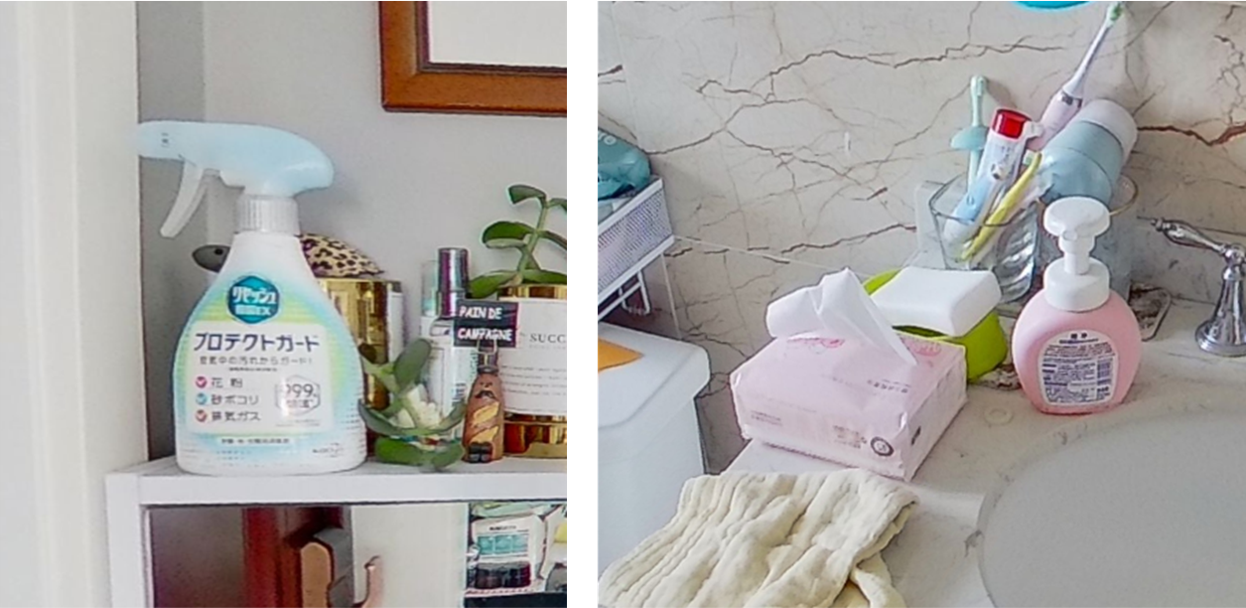
Disinfectant spray (left) and wipes for hands and face (right)
(Source: Consumer Life Panorama)
-

Author profile
Yang Yan
A Chinese researcher based in Japan shares insights on overseas consumer lifestyles, primarily focusing on China. Since coming to Japan, I've started using towels to wipe my face.
-

Editor profile
Yusuke Tatsuda
Responsible for building the Global Market Surfer website. After falling ill as a child from playing with earthworms, I developed the habit of washing my hands thoroughly.
 Global Market Surfer
Global Market Surfer CLP
CLP
